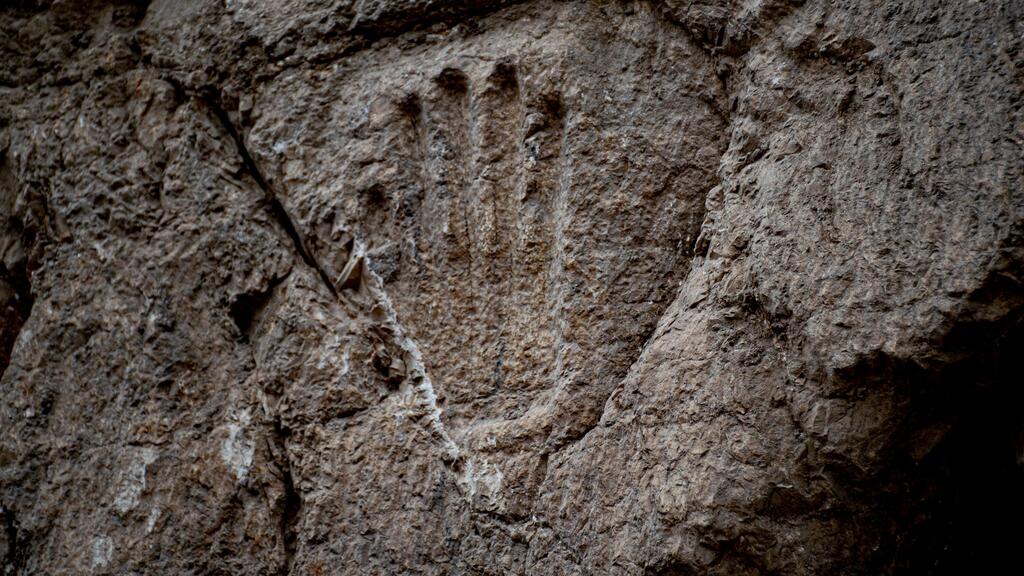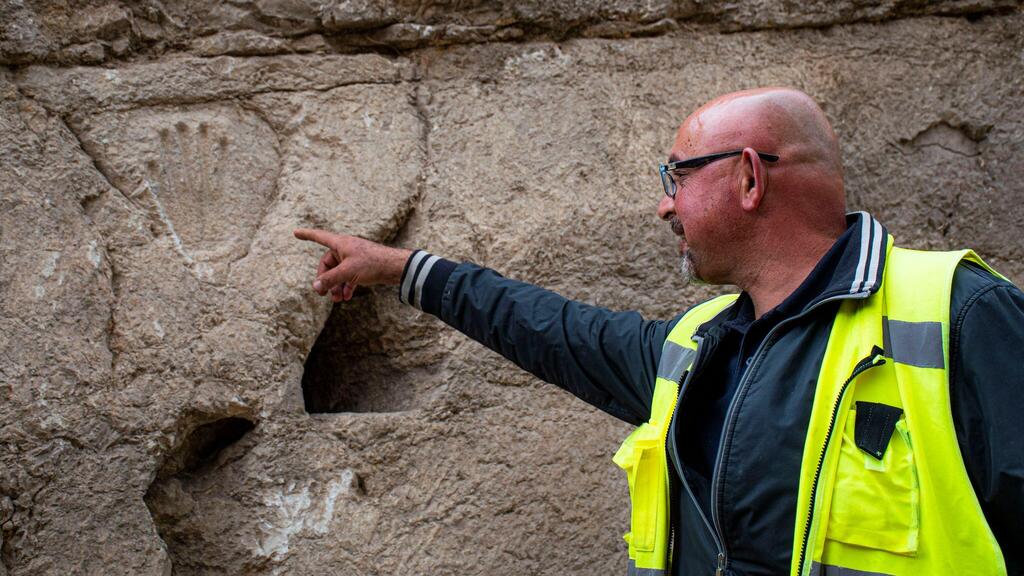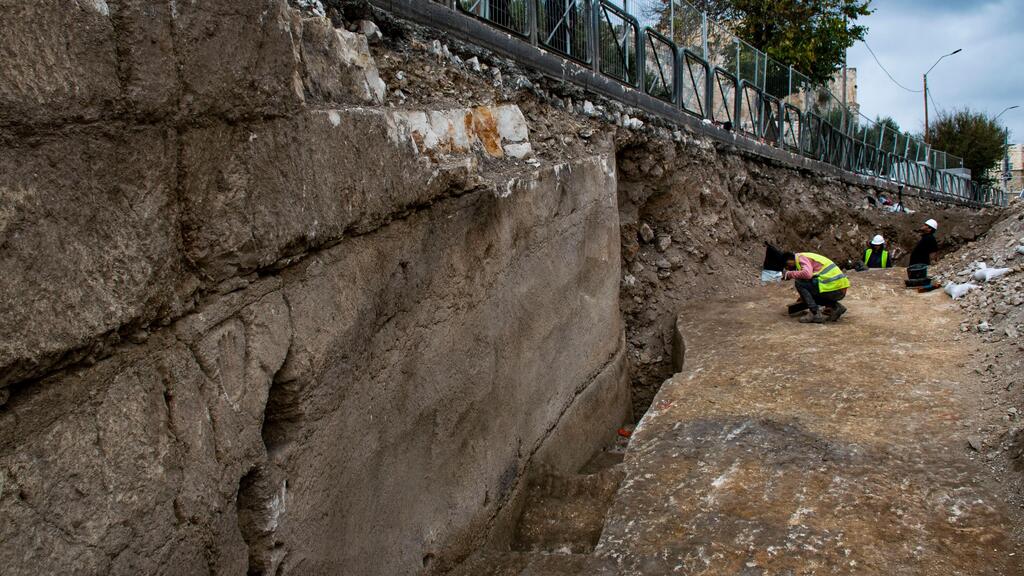Elements of ancient Jerusalem’s fortifications and a mysterious hand imprint carved into a rock were uncovered Wednesday by the Israel Antiquities Authority.
The archaeological excavations were carried out along the main Sultan Suleiman Street that runs adjacent to the city walls, prior to infrastructure works by Moriah - The Jerusalem Development Corporation.
In the course of the excavations, part of a deep defensive moat that surrounded the city walls, probably dating from the 10th century CE and possibly earlier, was uncovered. An unexplained carved hand imprint was discovered at one spot, carved into the moat wall.
Zubair Adawi, Israel Antiquities Authority excavation director, uncovered the moat located just underneath the street. According to Adawi, “People are not aware that this busy street is built directly over a huge moat, an enormous rock-hewn channel, at least 10 m wide, and between 2–7 m (6.5-23 feet) deep."
"The moat, surrounding the entire Old City, dates back about 1,000 years to the 10th century CE or earlier, and its function was to prevent the enemy besieging Jerusalem from approaching the walls and breaking into the city. Moats, usually filled with water, are well-known from fortifications and castles in Europe, but here the moat was dry, its width and depth presenting an obstacle slowing down the attacking army.”
The impressive walls and gates of the Old City visible today were built in the 16th century by the Turkish Ottoman Sultan Suleiman I, the Magnificent. “The earlier fortification walls that surrounded the ancient city of Jerusalem were much stronger,” says Dr. Amit Re’em, Jerusalem regional Director at the Israel Antiquities Authority. “In the eras of knights’ battles, swords, arrows, and charging cavalry, the fortifications of Jerusalem were formidable and complex, comprising walls and elements to hold off large armies storming the city.”
Re’em said: “Armies trying to capture the city in the Middle Ages, had to cross the deep moat and behind it two additional thick fortification walls, whilst the defenders of the city on the walls rained down on them fire and sulfur. As if this wasn’t enough, there were secret tunnels in the fortifications, some of them uncovered by the Israel Antiquities Authority archaeologists in previous excavations, whereby the city defenders could emerge into the moat and attack the enemy by surprise, and then disappear back into the city.”
“The historians who accompanied the First Crusade, describe the arrival of the Crusaders at the walls of Jerusalem in June 1099. Exhausted by the journey, they stood opposite the huge moat, and only after five weeks succeeded in crossing it with deploying tactics and at the cost of much blood, under heavy fire from the Moslem and Jewish defenders.”
To date, archaeologists have not deciphered the meaning of the carving on the moat. “Does it symbolize something? Does it point to a specific nearby element? Or is it just a local prank? Time may tell,” say the researchers.
According to Eli Escuzido, director of the Israel Antiquities Authority, “Many dreamed about and fought for Jerusalem, and the city fortifications are a silent testimony. The archaeological finds enable us to visualize the dramatic events and the upheavals that the city underwent. One can really imagine the tumult and almost smell the battle smoke. We are daily unraveling the intensive military history of the city, and we will make great efforts to exhibit the finds to the general public.”




